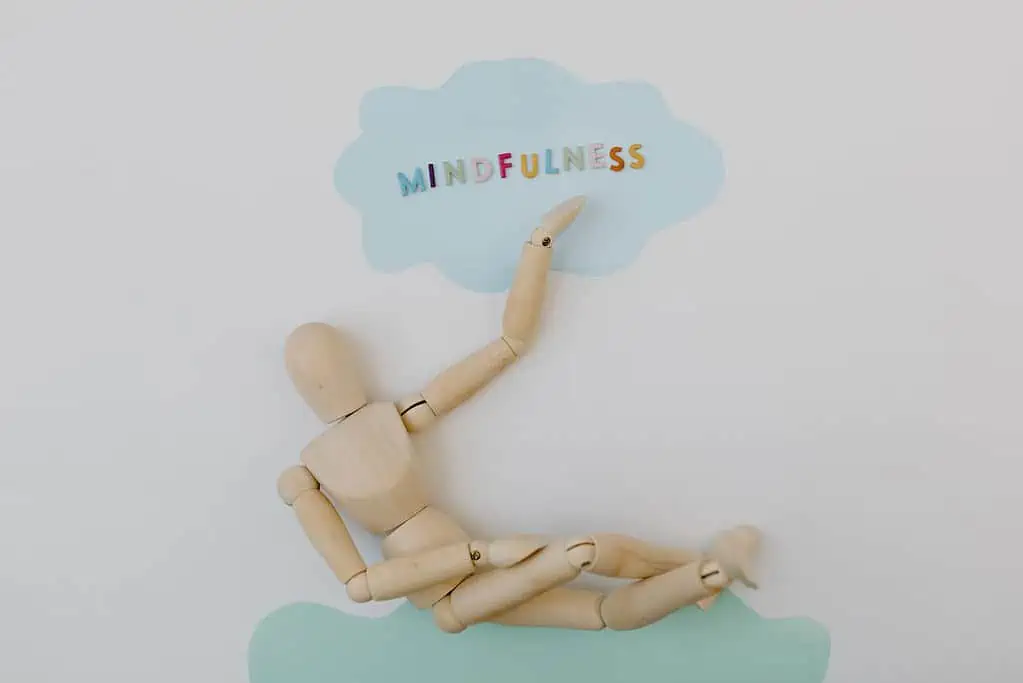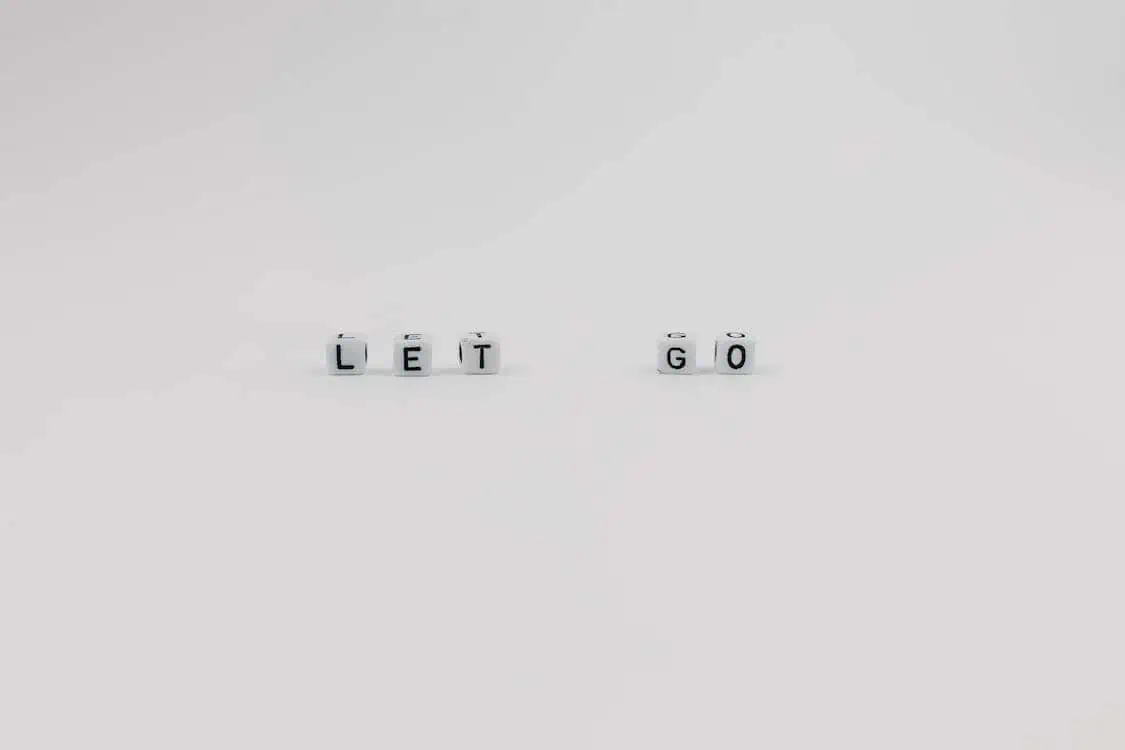Do you know that sensation of feeling stuck and overwhelmed? Remember those moments when you felt like life was against you? Or maybe this is still a common set of feelings that you have today.
These are pretty common signs of being stuck in the victim mentality, that mindset where it feels as though everything is against you.
If this is currently you, then it is time to make an incredible change in your life.
This change involves divine surrender and knowing the difference between what you can and can’t control. Let’s take a look at how you can make this shift.

Contents
- 1 Letting go of control – An Exercise for Mental Health and Well-Being
- 2 How to deal with Negative Emotions
- 3 Practice coming back to the present moment
- 4 Try This: A mindfulness practice
- 5 Write a list of what you can and can’t control
- 6 Understanding internal and external factors
- 7 Re-find your joy
- 8 Go back to nature – where a greater force is always in control
- 9 Frequently Asked Questions:
Letting go of control – An Exercise for Mental Health and Well-Being
Let go of control. It is easier said than done. Craving control often starts to happen when you feel like your life is falling to pieces. When you have many hidden painful emotions and all you want to do is keep them together, you may reach for control tactics to help you control what you can.
But control is always an illusion. Even when you feel like you have everything together, all it takes is one phone call with breaking news, or an accident on the street, or a natural disaster to create major changes in your life. Perhaps this moment shatters the illusion of having it all together, and you may realize just how precious and fragile life is.
When you can start to accept that there is a bigger force at play, you can be fully aware of the things you can’t control. With this new awareness, you allow yourself to be free from worrying and to stop losing sleep over negative thoughts. There are simply some circumstances that you can not influence, no matter how much hard work you put into trying.
This quote says it all:
‘One day I just woke up and realized that I can’t touch yesterday. So why the heck was I letting it touch me?’ – Steve Maraboli
With a new attitude, you can spend less time in fear and more time cultivating a positive outlook on your life.
How to deal with Negative Emotions
Negative emotions are a very natural part of every human experience. It doesn’t take much for us to feel the effects of stress, worry, anxiety, or fear. These emotions manifest in the body when we are trying to control certain circumstances and we are afraid of the possible outcomes.
The only way to be at peace with your emotions is to befriend them. Get to know what worry, fear, and anxiety feel like in your body. What effect do they have on your life?
When you are awake in the middle of the night, heart pounding with anxiety about the presentation you must give tomorrow, or the tough conversation you need to have with a friend, ask yourself if losing sleep over this fear is the most productive outcome.
The alternative to stress in this situation is the understanding of the things you can control and focus on these. Focus on getting enough sleep, that you can control! What happens tomorrow is out of your control, but how you feel now is something you can act upon.

Practice coming back to the present moment
To practice controlling what you can, you must be in the present moment. You can not control the future and you can not control or change what happened in the past. How much time do you want to spend focusing on these aspects of your life, if you can’t do anything about them?
The process of coming back to the moment reminds us that the small positive changes that you make now, in this very moment, will be the only chance you have of being prepared for what is to come. Put the effort into the here and now to ensure that you can reap the benefits of the new version of you that is emerging.

Try This: A mindfulness practice
Mindfulness is the key to coming back to the moment. Here is an invitation for you, to try right now:
Think of one thing in your life that you have been trying to control but it is causing you stress. This could be:
- Controlling the outcome of a job interview
- Trying to control your current health conditions
- Stressing to get high marks in your bachelor’s degree
- Worrying about your relationships with your partner or family
- Worrying about what is happening in all corners of the world
Now, think about what this constant exertion of effort is creating in your body. Is it depriving you of happiness? Is it stunting your ability to work on personal growth? Is it creating a sense of self-blame, and making you feel stuck?
Just take a few moments now to really feel the effect of all the things you are trying to control.
Now take a deep breath in. Open your mouth, and take a long sigh out. With your exhale, let go of the effort, let go of the need for having power, and let go of the things you can’t control.
With this sensation of letting go, spend time in the here and now, the only place that exists. Focus on your breath, focus on your mental health and focus on the simple act of putting your well-being first.
Now, think of a few things you can control, such as the pace of your breath or your current thought process. Tap into your strong mind, and your positive outlook on life. Remind yourself of the positive mindset that you worked so hard to build up. Stay focused on the practice of being here, now. Be here, now. The time right now is the only time that does matter because it is the only time that we have some sense of control over.
During our lives, it is easy to be caught up in ideas of the future or to chase happiness from the past, without realizing that by focusing on the present moment, we can choose our mindset and change our feelings.
There is a pretty simple solution, come back to the present, find your breath, remember your values, discover the point and purpose of life, and identify the things you can control.

Write a list of what you can and can’t control
Another great exercise for practicing letting go of the things you can’t control can be done by spending time writing a list of the things you can control and the things you can’t.
Take a piece of paper and divide it into two halves.
On one half will be the things you can control, either right now, or in the future, such as the environment you are currently in, the way you get to work, the job position you are in, your positive thought process, bringing your ideas to life and seeking advice when it is needed.
Write these kinds of themes down and then continue to expand on this list. As you do so, focus on your ability to control some of the small things in life. Let this small amount of control bring you feelings of happiness, and accept that this can make a difference in your life’s trajectory.
On the other half of the paper, write about the things you can not control. Such as the health of your loved ones, the end-of-year benefits you may or may not receive in your workplace, and your past mindset and attitude toward your old self. Write down more things of what you have no control over.
You have no power to control these aspects of your life, no matter how much you focus on them, or how much effort you put into them. Therefore, expending your energy in this area is like sending your energy straight down the drain.
Knowing that you have no control, can you try to accept that life moves in a certain way? Sometimes it is not about our own feelings, or how much power we can manifest, but sometimes it is about letting go so we can experience less anxiety in this world and this life.
Place this list in a place where you will see it often so that you can be reminded of the power of yourself, and the greater power of the world itself.

Understanding internal and external factors
There are both internal and external factors to life and both have an overall effect on your mindset, and attitudes.
To generate positive internal factors, you can practice working on changing your attitude, taking rest when needed, finding a focus point and purpose for your daily life, or working on your inner world through yoga, meditation, and other spiritual practices.
The external factors that can you can control include your immediate environment, what you focus on seeing around you (i.e. choosing gratitude), and the people you surround yourself with. These external factors also create your reality, and by changing these outer ideas, you can also change your inner feelings.
Re-find your joy

Lead your life with joy. Be the creator of your feelings. Choose to be mindful of which attitude or opinion you hold about specific situations.
For you to fully let go of control, you need to understand that joy can still be found in the tough moments and in the hard feelings. Just because a bad situation unfolds, it doesn’t have to become the center focus of your life.
If you want to lead your life from your heart, you need to make a deal with yourself that no matter what happens, you will choose to find the lesson in it or to find the peace in it.
One that refuses to be ruled by an attitude of resentment, will automatically focus on the joy in life. Joy is one of the things you can control!

Go back to nature – where a greater force is always in control
Being humbled by the force of nature is the final step in practicing divine surrender. In nature, you are a small part of the bigger picture, with no control over how it will play out.
Go camping, and watch a powerful thunderstorm roll in. Watch the thrashing waves on an ocean wall as grey skies hover above. Focus on the small animals that work together to create a mighty force of change in the giant jungle.
When you focus on the abilities of nature, you simply have to let go of control. Natural disasters such as hurricanes, flash floods, or bushfires can whip through an area destroying everything in its path. No matter how much we focus on modern technology or focus on trying to stop the path of destruction, we have no control over how big or how wild nature will be.
Next time you have a chance to be in the wilderness, sit on a fallen ancient tree trunk, or find a comfy spot to rest and ponder the forces of nature that have ripped through this piece of land before and how many more times this may happen. In our focus, but out of our control.

Frequently Asked Questions:
What does it mean to let go of control?
To let go of control, one must know how to focus on what one can control, and let go of what one can’t. In this act of differentiation, the notion of control can be changed only to encompass what happens in the present moment. You can not control the outcome of a situation, but you can control your reaction to it.
To let go of control also means to trust that there is a greater power in the universe that is acting for the highest good for all. To let go and surrender to the divine. It also means to feel free of expectations and instead be living in the present.
How can letting go of control have a positive impact on my life?
The need for control can leave you feeling stuck in a rut, and believing that life is against you. In this way, you start to believe that you have no control over your life, and the more you focus on control, the further away it feels.
When you let go of control, you can feel free, you feel more trust in the path of your life, you feel expansive and curious about where your life could go next. When you let go of control, you allow life to simply unfold in the perfect direction that it needs to go.
How do I deal with my need to always be in control?
Start small. Make little observations about your current attitude toward life, and decide if you are letting life happen to you, or if you are being the creator of your reality. Focus on what you can change, and your reaction to the present moment. Also try some of the activities in this article such as spending time in nature, or writing a list of what you can and can’t control and focusing on joy!



